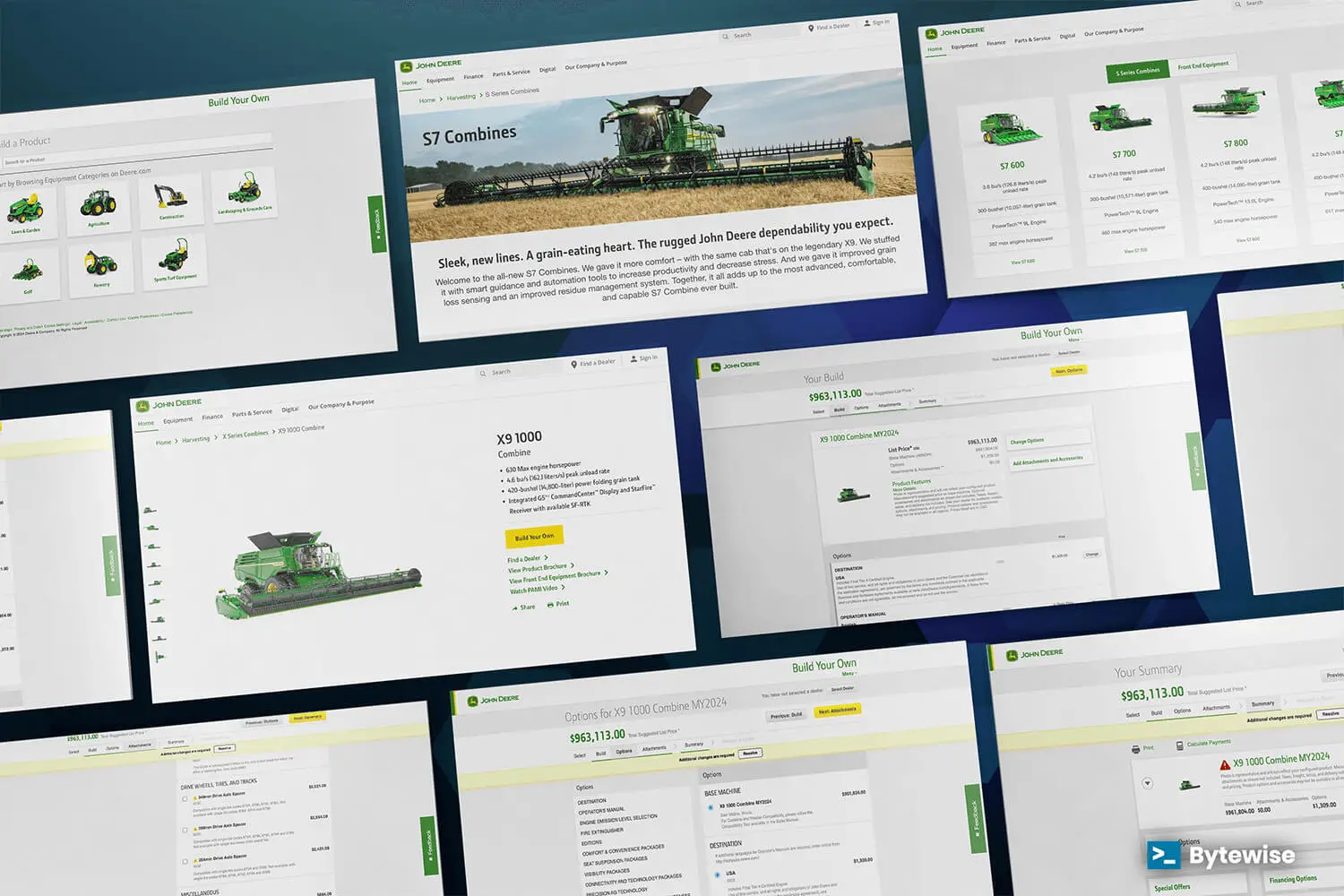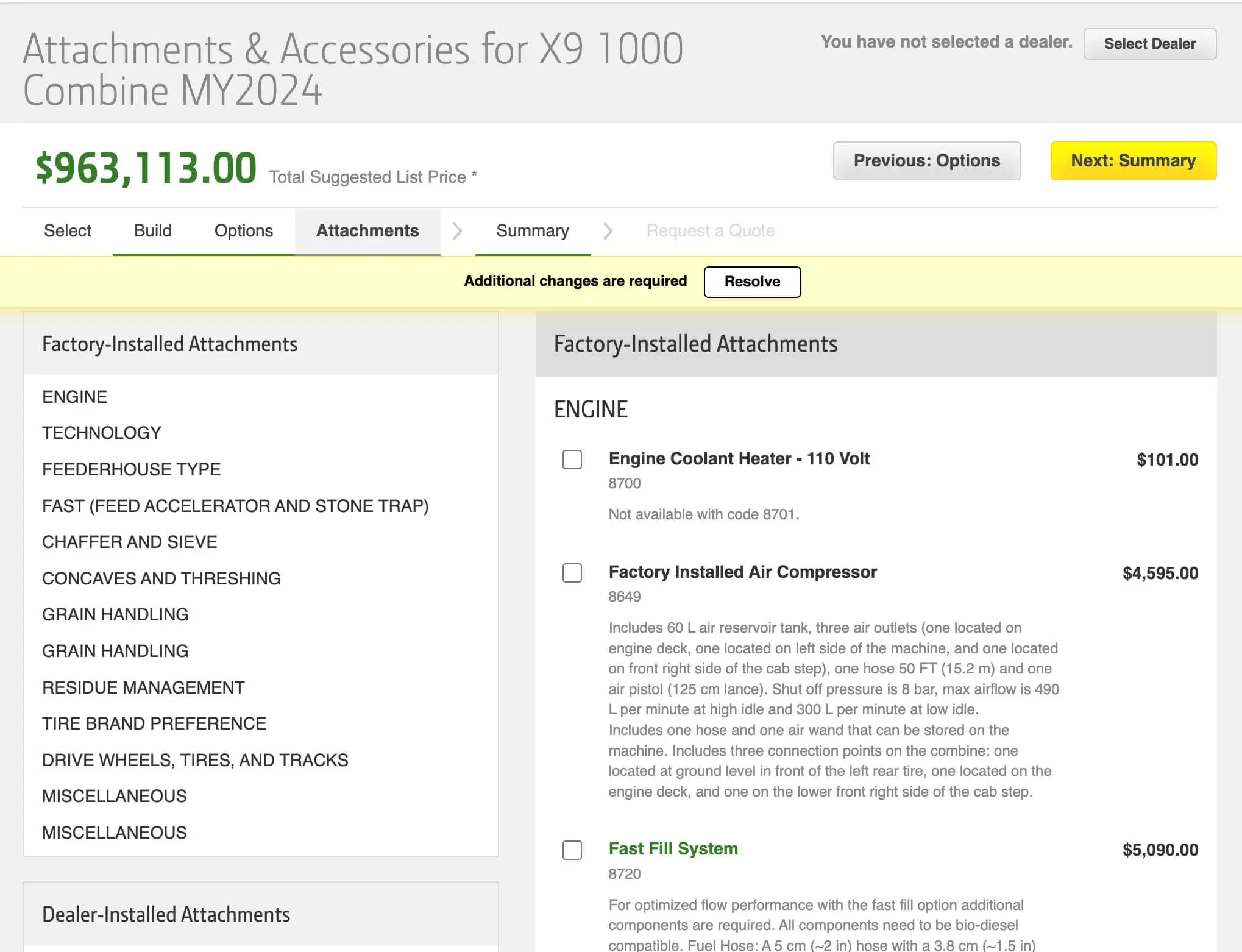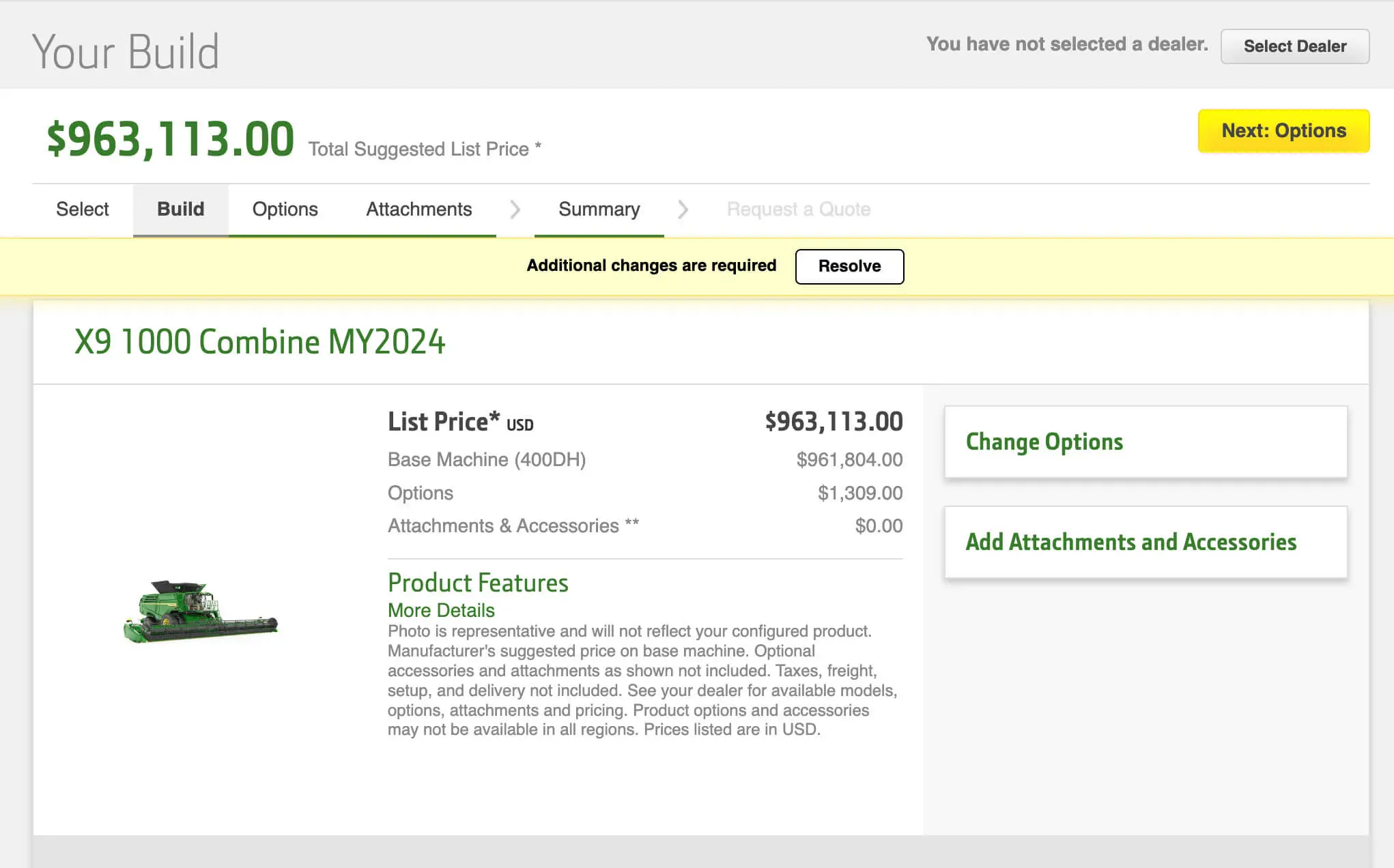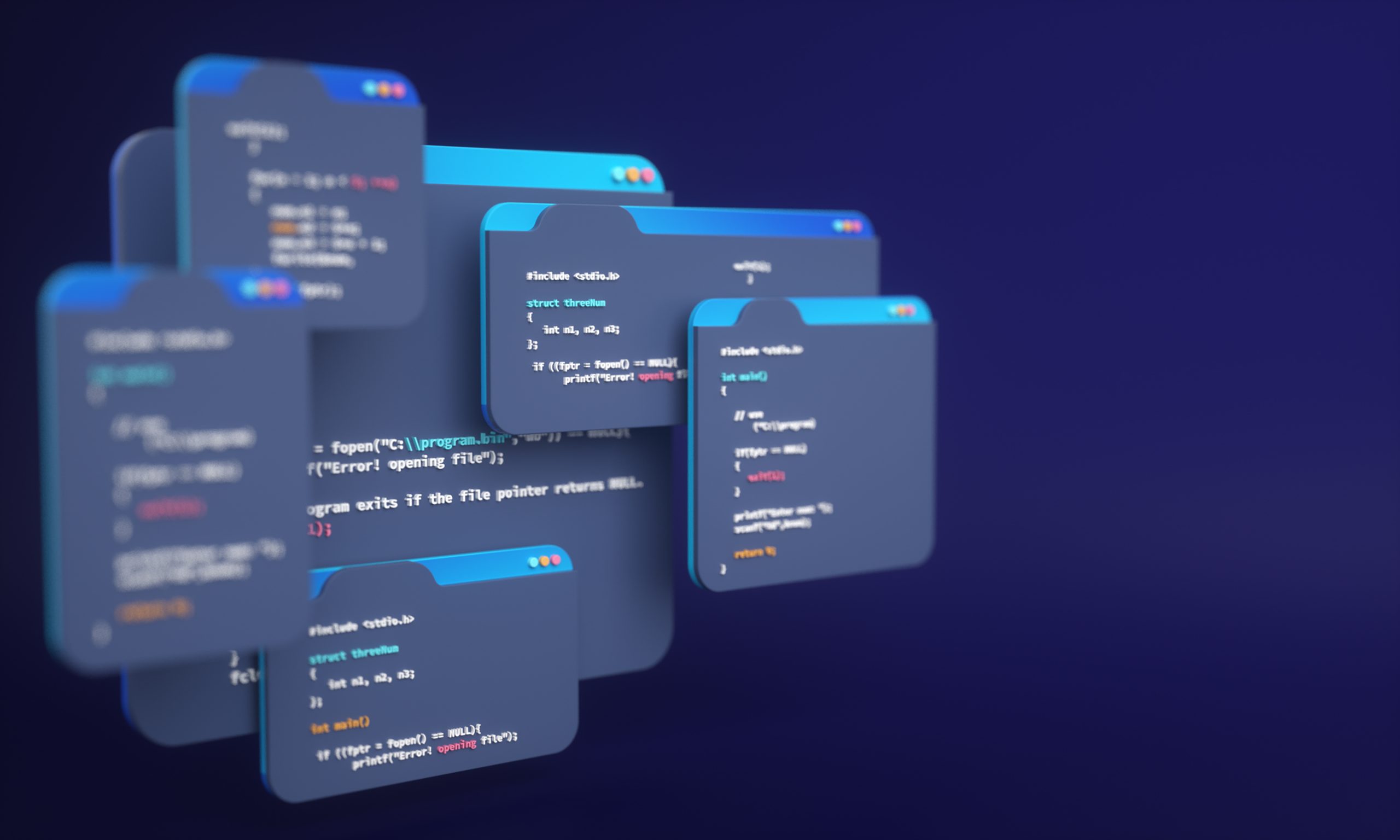John Deere
A Fortune 500 corporation that specializes in manufacturing agricultural machinery, heavy equipment, forestry machinery, and lawn care equipment used and recognized globally.
Challenge
Dealership software was outdated and the workflow of selecting, configuring, pricing, and ordering large equipment caused friction due to slow performance, difficulty navigating the menus, and overall layout.
Services
Software Modernization
Custom Software Development
React DevelopmentResults
Software modernization was completed on time, on budget, and with all benchmarks met or exceeded. The software was subsequently deployed to all Deere dealerships across the world.
Summary
John Deere dealerships were using outdated software to configure equipment and build quotes for potential customers. Due to the complexity of such large, expensive purchases, improving the software was a top priority.
Building an optimized, modern version of legacy software
The legacy software was using a much-older version of Java on the backend, and an early version of Angular 1.x on the frontend. As reusability was a big factor to consider in hitting the milestones, the team opted to upgrade the backend to newer versions of Java, but completely rewrite the frontend using React.
We chose to use React because of its emphasis on reusable components, its diffing algorithms that allowed fast UI refreshes, and because of its high adoption rates should Deere need to hire more developers.
Fluid communication, expert planning, and quality engineering
The software was extremely complicated because it had to take into account which country the dealership was in (some equipment is not available in certain parts of the world), which parts were compatible with the selected equipment, inventory availability, and so much more. Constant communication with the product team to remove any blockers or perform knowledge transfers as needed helped keep momentum up.
From a software architecture standpoint, we opted to split the work up into modules, with each tab of the software representing one module such as Build, Options, Attachments, and Summary. Once the modules were identified, careful estimation work determined which modules would need the most resources, and which could be completed with only one or two developers.
Daily check-ins with the team were an important way to see if any progress was stalling, and weekly demos allowed us to gather feedback and iterate quickly and accurately to add any changes or requests.
The project was a success – after each module was rigorously tested through an in-house QA team, the newly updated software was deployed worldwide in a gradual rollout.




